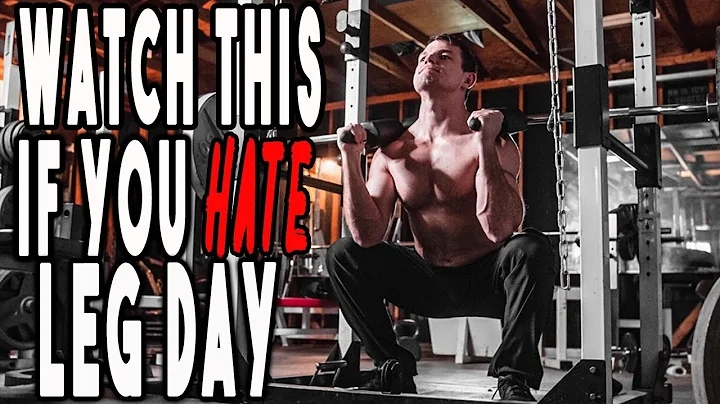Spotting Authentic WW2 M1 Helmets: A Comprehensive Guide
Table of Contents:
- Introduction
- History of the M1 Helmet
- Types of M1 Helmets
- 3.1 World War II Productions
- 3.2 Post-War Productions
- 3.2.1 Swivel Bill Helmets
- 3.2.2 Fixed Bill Helmets
- Differences between European Clones and American-Made Helmets
- 4.1 Liner Color
- 4.2 Heat Stamp
- 4.3 Ink Stamps
- Identifying World War II Productions
- Identifying Post-War Productions
- The M1C Helmet for US Airborne
- 7.1 Features of the M1C Helmet
- 7.2 Differences from the Standard M1 Helmet
- Painting and Camouflage
- 8.1 Painting Variations
- 8.2 Camouflage Techniques
- Helmet Accessories
- 9.1 Helmet Netting
- 9.2 Helmet Covers
- Conclusion
Introduction:
In this article, we will explore the fascinating world of M1 helmets. The M1 helmet is an iconic symbol of World War II and has continued to be used for many decades after. We will delve into the history of the M1 helmet, discuss the various types of M1 helmets, and explore how to differentiate between European clones and American-made helmets. Additionally, we will examine the features of the M1C helmet designed for US Airborne, discuss painting and camouflage variations, and explore helmet accessories. By the end of this article, you will have a comprehensive understanding of M1 helmets and be equipped with the knowledge to identify and appreciate these historical artifacts.
History of the M1 Helmet:
The M1 helmet was first produced by the U.S. government in April 1941 to replace the Model 1917 helmet. Over 22 million M1 helmets were produced during World War II and remained in use by the U.S. Army until 1985. Due to its durability and functionality, the M1 helmet found its way into the hands of many countries who adopted and manufactured their own versions. Understanding the history behind the M1 helmet is essential in identifying its various characteristics and variations.
Types of M1 Helmets:
3.1 World War II Productions:
During World War II, different versions of the M1 helmet were produced. These helmets were primarily manufactured by the U.S. government and have distinct features that set them apart from post-war productions. One noticeable difference is the color of the liner. World War II helmets often have a khaki-colored liner, while post-war versions tend to have green-colored liners. While this is not always the case, it can serve as a helpful indicator.
3.2 Post-War Productions:
Post-war productions of the M1 helmet can be further classified into two categories: Swivel Bill Helmets and Fixed Bill Helmets.
3.2.1 Swivel Bill Helmets:
After 1942, the U.S. government started producing M1 helmets with swivel bills. These helmets have a movable bill, which was designed to replace the fixed bill helmets due to the constant breaking of the bill. Swivel bill helmets are more commonly found in the market compared to fixed bill helmets.
3.2.2 Fixed Bill Helmets:
Fixed bill helmets, on the other hand, were produced from 1941 to 1942. These helmets have the buckle hook welded onto the helmet, providing a fixed bill. Due to their limited production period, fixed bill helmets are considered more rare and valuable.
Differences between European Clones and American-Made Helmets:
4.1 Liner Color:
One way to differentiate between European clones and American-made M1 helmets is by examining the color of the liner. American manufacturers typically used khaki-colored liners for World War II productions, whereas European clones may have green-colored liners. However, it is important to note that there can be variations, so other factors should be considered when determining the authenticity of the helmet.
4.2 Heat Stamp:
All American manufacturer liners should have a heat stamp in the dome of the liner. This heat stamp indicates when and where the helmet was made. It is advisable to check for this heat stamp to ensure the authenticity of the liner. European clone productions do not have a heat stamp on the liner.
4.3 Ink Stamps:
Many countries used ink stamps on the helmet to indicate their origin, such as the Netherlands, Belgium, France, and more. If an ink stamp is present or there is no stamp at all, it is recommended to exercise caution and consider the helmet's authenticity.
Identifying World War II Productions:
To identify World War II productions, one can look for the presence of a khaki-colored liner, as mentioned earlier. Additionally, World War II helmets often have distinct features such as a heat stamp on the liner and a different painting underneath the fixed bill. These indicators can assist collectors in verifying the authenticity of World War II M1 helmets.
Identifying Post-War Productions:
6.1 Batch Numbers:
Post-war M1 helmets, both Swivel Bill and Fixed Bill, have batch numbers stamped on the front of the steel helmet. These batch numbers can provide valuable information about when and where the helmet was produced. By researching the batch numbers, collectors can gain insights into the history and provenance of their helmets.
The M1C Helmet for US Airborne:
7.1 Features of the M1C Helmet:
The M1C helmet was specifically designed for the US Airborne units. It shares many similarities with the standard M1 helmet but has a distinct feature – a small strap with a button at the end. This strap prevents the liner from detaching when paratroopers jump from airplanes, ensuring their safety during airborne operations.
7.2 Differences from the Standard M1 Helmet:
The primary difference between the M1C helmet and the standard M1 helmet lies in this additional strap with the button. The standard M1 helmet does not have this feature, as it is not essential for regular infantry use. By understanding this difference, collectors can identify and appreciate the purpose-specific design of the M1C helmet.
Painting and Camouflage:
8.1 Painting Variations:
M1 helmets exhibit various painting variations, depending on the production period. Earlier versions of the helmet featured a different type of painting, while later productions used olive drab. Collectors can identify these painting variations to determine the era in which the helmet was manufactured.
8.2 Camouflage Techniques:
Helmet netting and helmet covers were common accessories used to camouflage the M1 helmet. Small and large hole netting were used in different theaters of war, with smaller holes being more prevalent in the Pacific Theater and larger holes in the European Theater. These accessories played a crucial role in providing concealment on the battlefield.
Helmet Accessories:
9.1 Helmet Netting:
Helmet netting was used to attach foliage or additional camouflage elements to the M1 helmet. By examining the type of netting and its placement on the helmet, collectors can gain insights into the historical context and theater of war in which the helmet was utilized.
9.2 Helmet Covers:
Helmet covers were another accessory used to camouflage M1 helmets. These covers were utilized in the European Theater and came in various camo patterns. The presence of a helmet cover can indicate the geographic area in which the helmet was employed.
Conclusion:
In conclusion, the M1 helmet is a remarkable artifact with a rich history. By understanding the different types of M1 helmets, distinguishing European clones from American-made helmets, identifying World War II productions, appreciating the unique features of the M1C helmet, recognizing painting and camouflage variations, and exploring helmet accessories, collectors and enthusiasts can gain a deeper appreciation for these iconic pieces of military history.
Highlights:
- The M1 helmet is an iconic symbol of World War II and has continued to be used for many decades after.
- World War II productions of the M1 helmet have distinct features and can be differentiated from post-war productions.
- European clones and American-made M1 helmets have varying characteristics, including liner color, heat stamps, and ink stamps.
- The M1C helmet was designed for US Airborne units and has a strap with a button to prevent the liner from detaching during jumps.
- M1 helmets exhibit different painting variations, and helmet accessories such as netting and covers were used for camouflage purposes.
FAQ:
Q: How can I identify a World War II M1 helmet?
A: World War II M1 helmets often have khaki-colored liners, heat stamps, and different painting underneath the fixed bill.
Q: What is the difference between European clones and American-made M1 helmets?
A: European clones may have green-colored liners, lack heat stamps, and feature ink stamps, whereas American-made helmets have khaki-colored liners, heat stamps, and no ink stamps.
Q: What are the differences between Swivel Bill and Fixed Bill M1 helmets?
A: Swivel Bill helmets have a movable bill, while Fixed Bill helmets have a fixed buckle hook welded onto the helmet. Fixed Bill helmets are considered more rare and valuable.
Q: How can I identify the authenticity of a post-war M1 helmet?
A: Post-war M1 helmets have batch numbers stamped on the front of the steel helmet. Researching these batch numbers can provide insights into the helmet's production history.
Q: What were the helmet accessories used for?
A: Helmet netting and covers were used for camouflage purposes, allowing soldiers to blend into their surroundings on the battlefield.
Resources:
- [Insert relevant resource websites if mentioned in the content]







